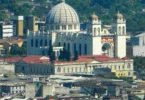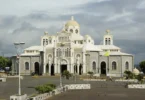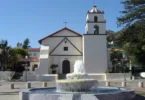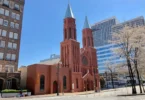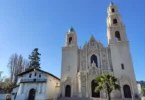Introduction
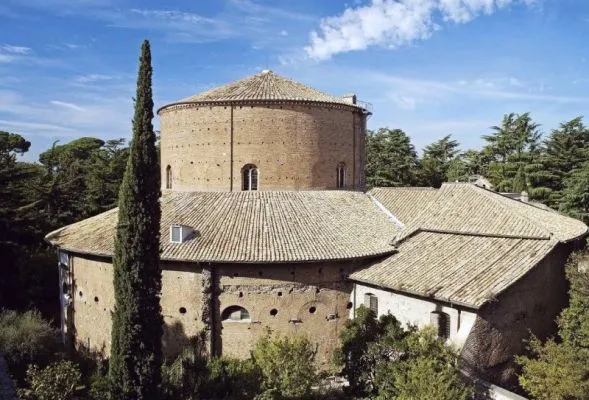
The Basilica of St. Stephen in the Round on the Caelian Slope (Italian: Basilica di Santo Stefano al Monte Celio, Latin: Basilica S. Stephani in Caelio Monte) is an old basilica and nominal church in Rome, Italy. Generally named Santo Stefano Rotondo, the congregation is Hungary’s “public church” in Rome, devoted to both Holy person Stephen, the main Christian saint, and Stephen I, the sanctified first ruler of Hungary . The minor basilica is likewise the parsonage church of the Ecclesiastical Collegium Germanicum et Hungaricum.
Beginning around 1985, the cardinal cleric who holds the title of S. Stephano has been Friedrich Wetter.
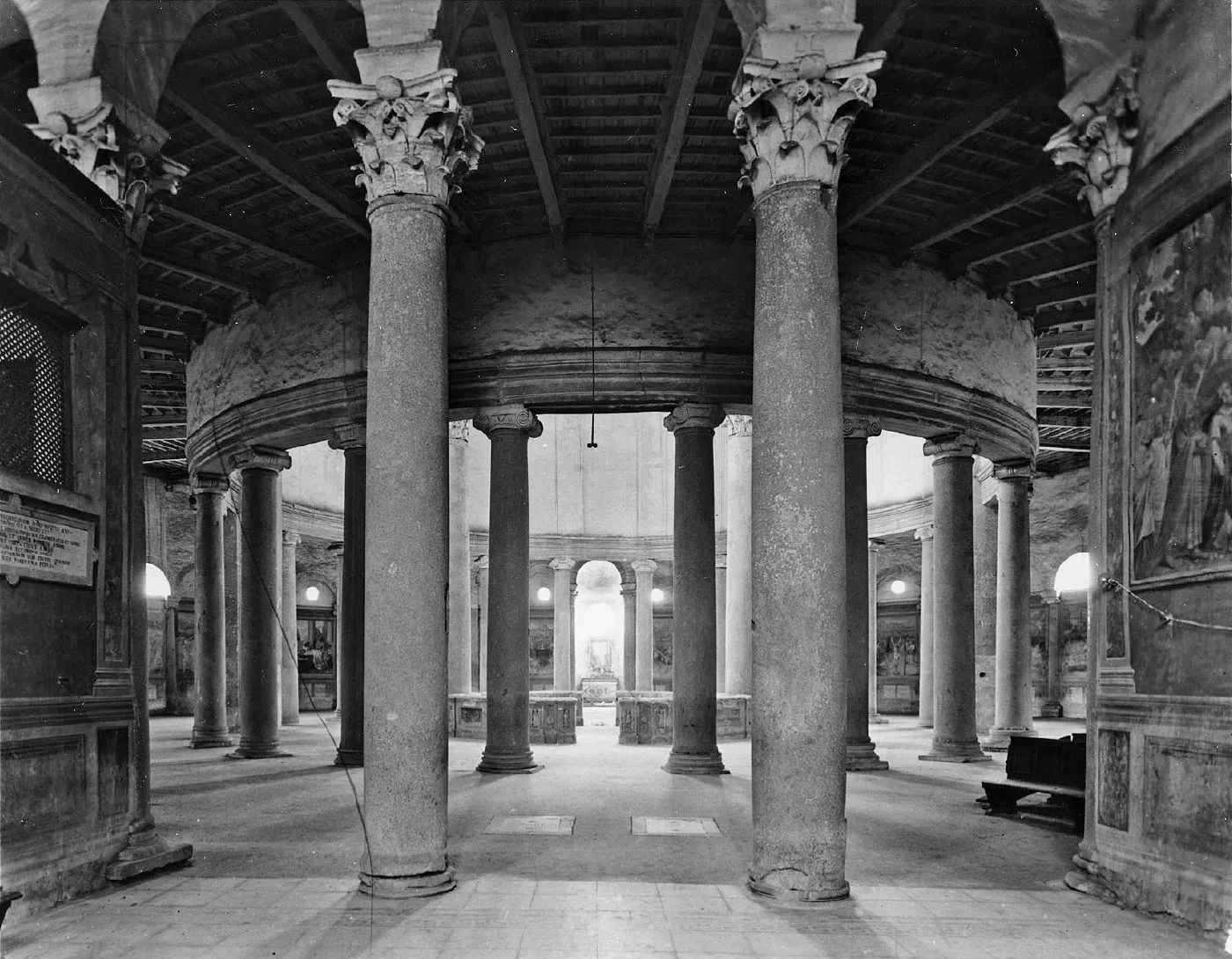
Early History and Establishment
The Basilica of St. Stephen in the Round (Santo Stefano Rotondo) was blessed by Pope Simplicius somewhere in the range of 468 and 483 Promotion. It was committed to Holy person Stephen, the principal Christian saint, whose relics had been brought to Rome after their revelation in the Heavenly Land. The congregation holds the differentiation of being the principal round plan church in Rome, a special engineering decision that put it aside from other houses of worship of the period. It is accepted that the basilica was supported by the well off Valerius family, whose domains covered enormous bits of the Caelian Slope. The family’s associations with the Sacred Land, through Holy person Melania the Senior, a continuous traveler to Jerusalem, assumed a critical part in the congregation’s foundation.
Architectural Evolution and Restorations
The first church was authorized by Pope Leo I (440-461) and developed around 455 Promotion, in view of dendrochronology and antiquated coin proof. The congregation included three concentric ambulatories flanked by 22 Ionic segments, encompassing a focal roundabout space covered by a tambour that arrived at a level and width of 22 meters (72 feet). The tambour had 22 windows, however many were walled up during the fifteenth century reclamation. The focal wandering had a measurement of 42 meters (138 feet), and the external mobile’s breadth was 66 meters (217 feet). Four side sanctuaries framed a Greek cross plan. In the sixth hundred years, Pope John I and Pope Felix IV added mosaics and shaded marble to adorn the congregation. A later rebuilding by Pope Guiltless II (1139-1143) involved major primary changes, including the surrender of the external wandering, the walled-up windows, and the expansion of curves to help the vault.
Hungarian Influence and Modern-Day Significance
In 1454, Pope Nicholas V shared the destroyed basilica with the Pauline Dads, the main Catholic Request established by Hungarians. This prompted the congregation turning into the informal church of the Hungarians in Rome. Rebuilding endeavors during the 1450s, probable under Bernardo Rossellino and Leon Battista Alberti, resuscitated the congregation’s loftiness. In 1579, the Hungarian Jesuits joined the Pauline Dads, and the Collegium Hungaricum was laid out. The Collegium Hungaricum later converged with the Collegium Germanicum in 1580 to frame the Collegium Germanicum et Hungaricum, which turned into a huge place for Hungarian ministry. In the nineteenth hundred years, the English craftsman J. M. W. Turner visited Rome and outlined both the inside and outside of the basilica. The Cardinal Minister of Santo Stefano Rotondo has been Friedrich Wetter starting around 1985, following József Mindszenty, a prestigious Catholic forerunner in Hungary during the Socialist time.
Architecture of Basilica of San Sisto Vecchio in Rome, Italy
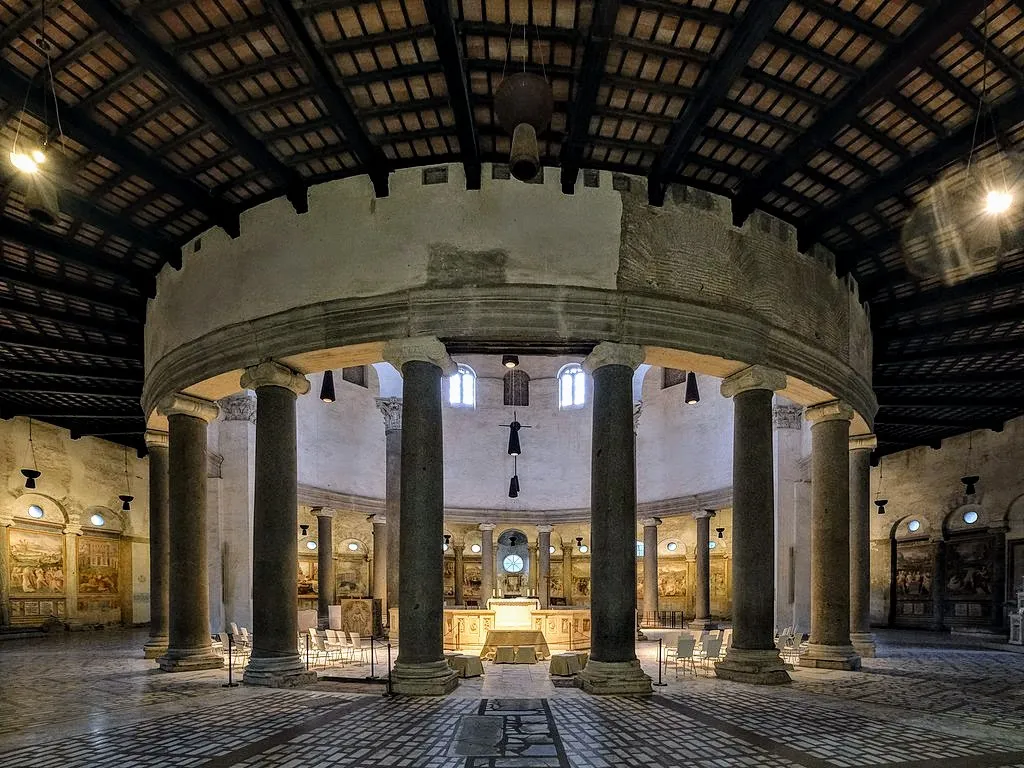
Architect: Bernardo Rossellino
Architectural Style: Ancient Roman architecture
Exterior
The exterior of Santo Stefano Rotondo presents a contrast to its circular interior, as it is built on a cruciform plan. The entrance features a portico with five arches, supported by tall ancient granite columns topped with Corinthian capitals. These elements were added in the 12th century by Pope Innocent II. This design enhances the church’s architectural significance and creates a striking first impression for visitors.
Interior and Artwork
Inside, the walls of Santo Stefano Rotondo are adorned with numerous frescoes, including works by Niccolò Circignani (Niccolò Pomarancio) and Antonio Tempesta. These frescoes depict 34 scenes of martyrdom, commissioned by Pope Gregory XIII in the 16th century. Each scene is accompanied by a titulus or inscription, which explains the martyrdom, names the emperor who ordered the execution, and includes a relevant biblical quotation.
The altar, created by Bernardo Rossellino in the 15th century, is a notable work of art. In the apse, there is a painting depicting Christ flanked by two martyrs. The basilica also preserves an ancient chair of Pope Gregory the Great, dating back to around 580 AD.
The Chapel of Ss. Primo e Feliciano, built by Pope Theodore I in 648, contains 7th-century mosaics. One mosaic shows the martyrs Primus and Felician flanking a jewelled cross (crux gemmata). Pope Theodore I brought the relics of these martyrs here and buried them alongside his father.
Hungarian Chapel
The Hungarian Chapel at Santo Stefano Rotondo was established after the original Santo Stefano degli Ungheresi in the Vatican was demolished in 1778 to make way for the St. Peter’s Basilica sacristy. In compensation, Pope Pius VI had the chapel constructed based on plans by Pietro Camporesi. Dedicated to Saint Stephen I of Hungary (Szent István), the chapel celebrates the feast of St. Stephen on 20 August. It serves as a focal point for Hungarian pilgrims who frequently visit.
Throughout the 20th century, Hungarian experts participated in the ongoing restoration and archaeological exploration of the church, working alongside German and Italian colleagues. Notable figures, such as Vilmos Fraknói, Frigyes Riedl, and László Cs. Szabó, have contributed to scholarly works about the church’s history and significance.
Recent archaeological discoveries uncovered the late-antique floor beneath the chapel, which was restored in 2006 by an international team led by Zsuzsanna Wierdl. Additionally, the frescoes in the chapel, painted in 1776, were found to cover older layers of artwork, revealing the chapel’s deeper historical significance.
Burials
The Santo Stefano Rotondo is also home to several notable burials. In 1523, Archdeacon János Lászai, a canon from Gyulafehérvár, was buried here after moving to Rome and becoming a papal confessor. His burial monument is a notable example of Renaissance funeral sculpture, with the inscription: “Roma est patria omnium” (Rome is everybody’s fatherland).
Another significant burial is that of Donnchad mac Brian, the Irish king of Munster, who died in Rome in 1064. His tomb is commemorated with a tablet in the church.
Mithraeum
Beneath Santo Stefano Rotondo lies a 2nd-century Mithraeum, related to the presence of Roman soldiers in the area. The cult of Mithras was popular among soldiers, particularly those of the Castra Peregrinorum, the barracks for foreign officials serving the Roman capital. Excavations have revealed the remains of these military barracks, which date to the Severan Age.
The Mithraeum is still being excavated, though it remains closed to the public. A colored marble bas-relief of Mithras slaying the bull, dating from the 3rd century, is now displayed in the Museo Nazionale Romano. These archaeological findings further enrich the historical depth of Santo Stefano Rotondo and its surrounding area.
Feast Day
Feast Day: 26th December
The Feast Day of the Basilica of St. Stephen on Mount Celio (Basilica di Santo Stefano Rotondo) is celebrated on December 26. This day is dedicated to St. Stephen, who is the first Christian martyr, commemorating his life and martyrdom. St. Stephen’s feast day is part of the broader Christian tradition of honoring saints.
Church Mass Timing
Yet to Update
Church Opening Time:
Monday : 10:00 am – 1:00 pm, 2:00 pm – 5:00 pm
Tuesday : 10:00 am – 1:00 pm, 2:00 pm – 5:00 pm
Wednesday : 10:00 am – 1:00 pm, 2:00 pm – 5:00 pm
Thursday : 10:00 am – 1:00 pm, 2:00 pm – 5:00 pm
Friday : 10:00 am – 1:00 pm, 2:00 pm – 5:00 pm
Saturday : 10:00 am – 1:00 pm, 2:00 pm – 5:00 pm
Sunday : 10:00 am – 1:00 pm, 2:00 pm – 5:00 pm
Contact Info
Address :
Via Santo Stefano Rotondo, 7, 00184 Roma RM, Italy
Phone : +390642119130
Accommodations
Connectivities
Airway
Rome Airport (FCO) to Basilica of St. Stephen on Mount Celio, Rome, Italy distance between 31 min (29.3 km) via A91.
Railway
Roma Termini Railway Station to Basilica of Santo Stefano Rotondo al Celio Rome, Italy distance between 12 min (3.0 km) via Via dell’Amba Aradam.


